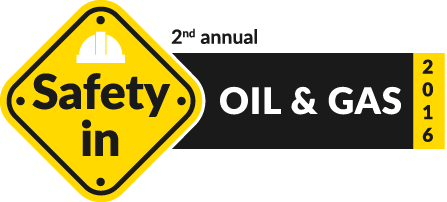Tuesday 1 March 2016
Go to Post-Conference In-depth Learning Session
08:15 | Registration and welcome coffee
08:50 | Opening remarks from the Chair
Kerry-Anne de Jager, Director, TechniTest
09:00 | INTERNATIONAL KEYNOTE PRESENTATION: How effective relationships can improve employees’ safety standards and processes
- Defining the critical steps to improve employees’ buy-in in change management to improve safety standards and processes
- Implementing effective process safety methodologies to improve employee relationships
- Understanding the challenges and benefits of establishing an effective safety culture across the organisation
- How effective relationships can drive your safety strategies to the next level
John Green, HSE Director, Laing O’Rourke (United Kingdom)
Benchmarking your methodologies to identify worthy change management strategies
09:40 | CASE STUDY: Learning from Santos’ Safer Together Programme – an innovative approach to operators’ engagement
- How can we get our frontline to connect with the common hazards they are exposed to at rig sites?
- Overcoming the challenges of not having a common life saver program across operators
- Ensuring the frontline connects with the hazards they are exposed to in their day to day activities
- Developing a ‘behaviour’ focused plan to develop personal accountability
- Improving engagement and interaction through new insights and perspectives
Jason Sullivan, Health & Safety Team Leader - CSG Drilling & Completions, Santos
10:10 | Morning tea
10:40 | Stop talking about safety
- Why best practices and compliance can be bad for safety
- How organisations can improve safety by focusing on innovation and productivity
- When people are the solution, rather than a problem to control
Daniel Hummerdal, Director of Safety Innovation, Art of Work
11:10 | CASE STUDY: Designing a behaviour-based safety program to drive cultural awareness and improvements in employees’ safety programs
- Identifying how to effectively launch, implement and apply a behaviour-based safety program
- Key players in driving and sustaining safety cultural awareness
- Overcoming the challenges of engaging and promoting safety programs across the organisation
Jessica Urquhart, Health and Safety Manager, Drillsearch
11:40 | Improving policies and procedures to drive safety improvements
- Increasing employee safety by thorough blast design and construction of operations and temporary buildings
- Creating processes, rule and procedures with disciplinary actions in case of violations
- Implementing effective and neutral training and supervision to avoid conflicts of interest and ensure proper safety management
Nigel Cann, Associate Principal Risk & Security, ARUP
12:10 | Networking lunch
Inspiring leadership to engage, motivate and develop your safety team
13:10 | Assessing different ways to apply neuroscience to expand safety culture
- Understanding how the brain works and how you use this information to develop your organisation’s safety leadership capability
- Applying neuroscience to inspire leadership in your organisational HSE strategies
- Maintaining your existing safety programs through improved communication and employee engagement
Nada Wentzel, Director, The Jonah Group
13:40 | Overcoming change management challenges when implementing a behaviourbased safety program
- How to get buy-in from senior management and employees for your behaviour-based safety program
- Accurately changing policies, procedures and process safety systems to put up a new program
- Engaging senior management to implement good process safety management systems that cope with occupational safety systems
Amanda Holland, Developments Senior Health and Safety Adviser, Woodside Energy
14:10 | PANEL DISCUSSION: Influencing culture by changing attitude to human risk mitigation and adapting to technology advancement
- Influencing leadership and motivational behaviour to reduce incidents caused by human factors as new technologies become available
- Understanding how organisations are moving towards Not Normally Manned (NNM) plants and adopting to new technology available
- Making safety personal and demonstrating genuine concern for workers by implementing process safety and continuous improvement strategies
Panel Moderator:
Robin Burgess-Limerick, Professor of Human Factors, Minerals Industry Safety and Health Centre The University of Queensland
Panellists:
Anthony Mitchell, HSE Director, Fluor Australia
Kerry-Anne de Jager, Director, TechniTest
Darron Brien, Managing Director, Drug and Alcohol Testing Institute
Lisa Took, General Manager, Drug and Alcohol Testing Institute
15:00 | Afternoon tea
Empowering workers and contractors to contribute to HSE excellence through improved communication
15:30 | Planning, resourcing and implementing safety programs to improve overall operations
- Taking passion and commitment on board when leading and supporting safer working environments and practices
- Best practice when implementing programs to improve operations, corporate governance, workplace health and safety
- Improving relationships between government and the private sector to help achieve successful change management results
Fiona Murfitt, Group HSSE Manager, Viva Energy
16:00 | Improving communication and collaboration between operators and contractors to reduce incidents
- Assessing the essentials in communication mistakes and identifying strategies to fix the issue
- Designing safety interventions to maximise workers’ perceptions, actions and effectiveness
- Establishing and categorising a robust contractor safety management strategy
Jason Edwards, Faculty of Health, School – Psychology and Counselling Research – CARRSQ, Queensland University of Technology
16:30 | Closing remarks from the Chair
16:40 | End of Day One and networking drinks
19:00 | Official event dinner
